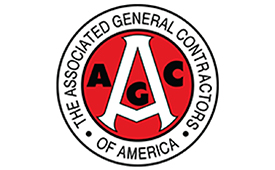Construction employment remains below pre-pandemic peak

Construction employment in July remained below levels reached prior to the pre-pandemic peak in February 2020 in 36 states, according to an analysis by the Associated General Contractors of America (AGC).
Association officials say construction employment would benefit from new infrastructure investments. They urge the House to quickly pass the bipartisan infrastructure bill that the Senate passed.
“This data shows that full recovery remains elusive for construction in most states,” says Ken Simonson, AGC’s chief economist. “In fact the fast-spreading COVID-19 delta variant may make it harder to find employees [that are] eligible to work on restricted sites and may also depress demand if some owners defer projects.”
AGC utilized data from the Bureau of Labor Statistics (BLS) and the U.S. Department of Labor. BLS posts data either for construction alone or construction, mining and logging combined.
The details
Between February 2020 and July 2021, only 14 states saw construction employment increases. Employment remained steady in the District of Columbia.
The largest job losses in that time came from Texas (56,200 jobs, down 7.2 percent), New York (52,600 jobs, down 12.9 percent) and California (35,100 jobs, down 3.8 percent). Louisiana (21,000 jobs, down 15.3 percent), Wyoming (3,100 jobs, down 13.5 percent) and New York saw the largest job losses in terms of percentage.
Among the states that added jobs in that 17-month span, Utah led all states with 7,900 jobs (up 6.9 percent), followed by North Carolina (5,700 jobs, up 2.4 percent) and Idaho (4,400 jobs, up 8.2 percent). Percentage wise, Idaho led the pack, followed by South Dakota (1,800 jobs, up 7.5 percent) and Utah.
Between June and July 2021, construction employment decreased in 18 states, increased in 30 and was unchanged in Kansas, Tennessee and Washington, D.C. The largest decline over the month occurred in Colorado, which lost 1,600 construction jobs (down 0.9 percent), followed by 1,500 jobs lost each in Oklahoma (down 1.9 percent), Texas (down 0.2 percent) and Pennsylvania (down 0.6 percent).
The largest percentage decreases between June and July happened in New Hampshire (600 jobs, down 2.2 percent), Oklahoma and Arkansas (1,000 jobs, down 1.9 percent).
Meanwhile, among states that created the most construction jobs between June and July, North Carolina added the most (4,300 jobs, up 1.8 percent), followed by New Jersey (4,000 jobs, up 2.7 percent) and Illinois (3,700 jobs, up 1.7 percent). The largest percentage increases were in New Jersey, Connecticut (1,500 jobs, up 2.7 percent) and South Carolina (2.600 jobs, up 2.4 percent).
AGC officials say construction employment was being impacted in many parts of the U.S. because of supply chain challenges and growing market uncertainty caused by increases in cases of the delta variant of COVID-19. Officials add that new federal infrastructure investments would provide a needed boost in demand and help put more people to work in construction careers.
“New federal infrastructure investments will help put more people to work in high-paying construction careers,” says Stephen Sandherr, AGC’s CEO. “The House can help put Americans back to work by immediately approving the infrastructure measure that passed the Senate with broad, bipartisan support.”
The House will have its first opportunity to act on the $1 trillion infrastructure bill when it returns from its summer recess on Aug. 23. Initially, the House was scheduled to be on recess until Sept. 20, but opted to return early to vote on the infrastructure bill, as well as a $3.5 trillion spending plan.









